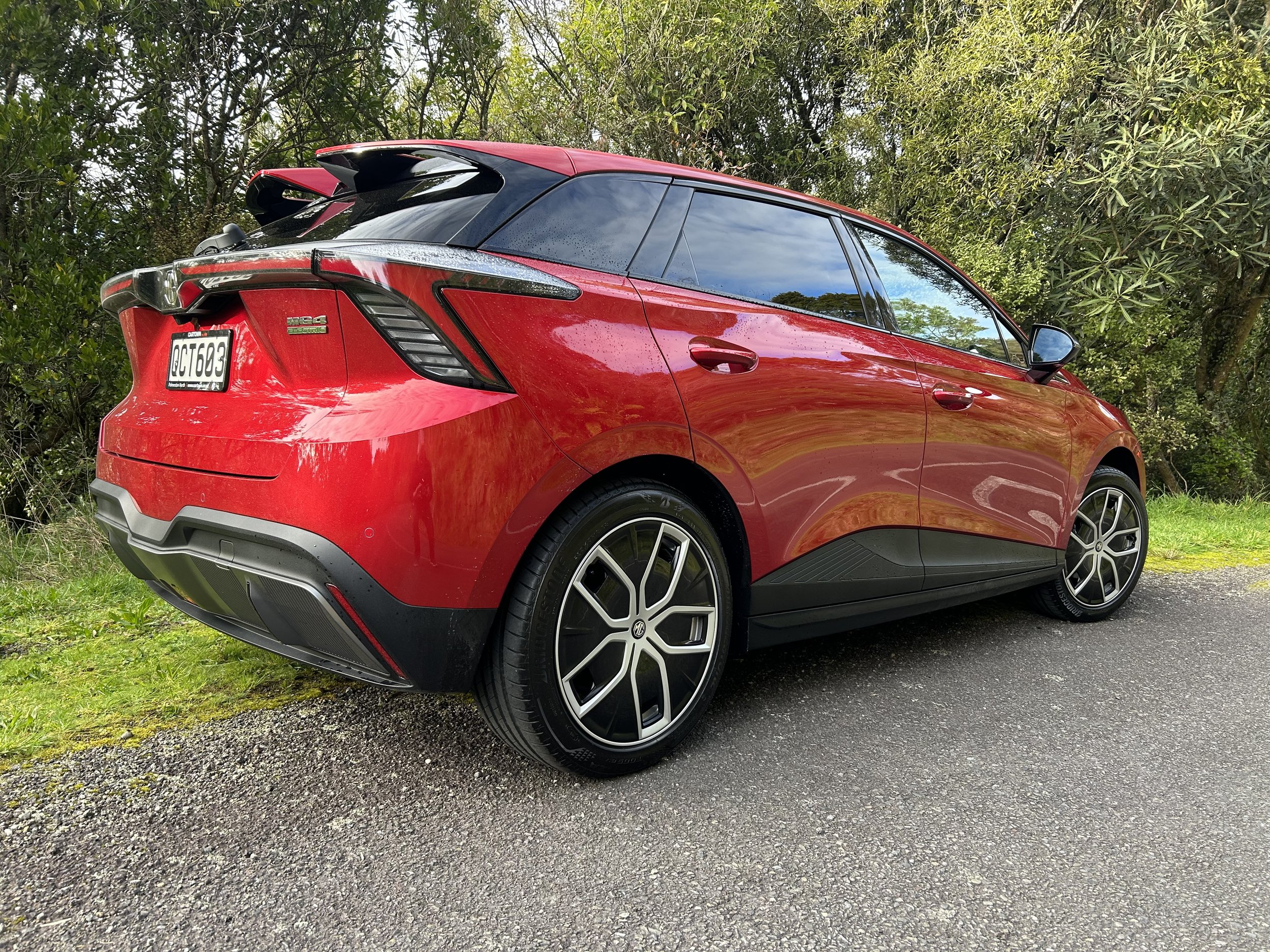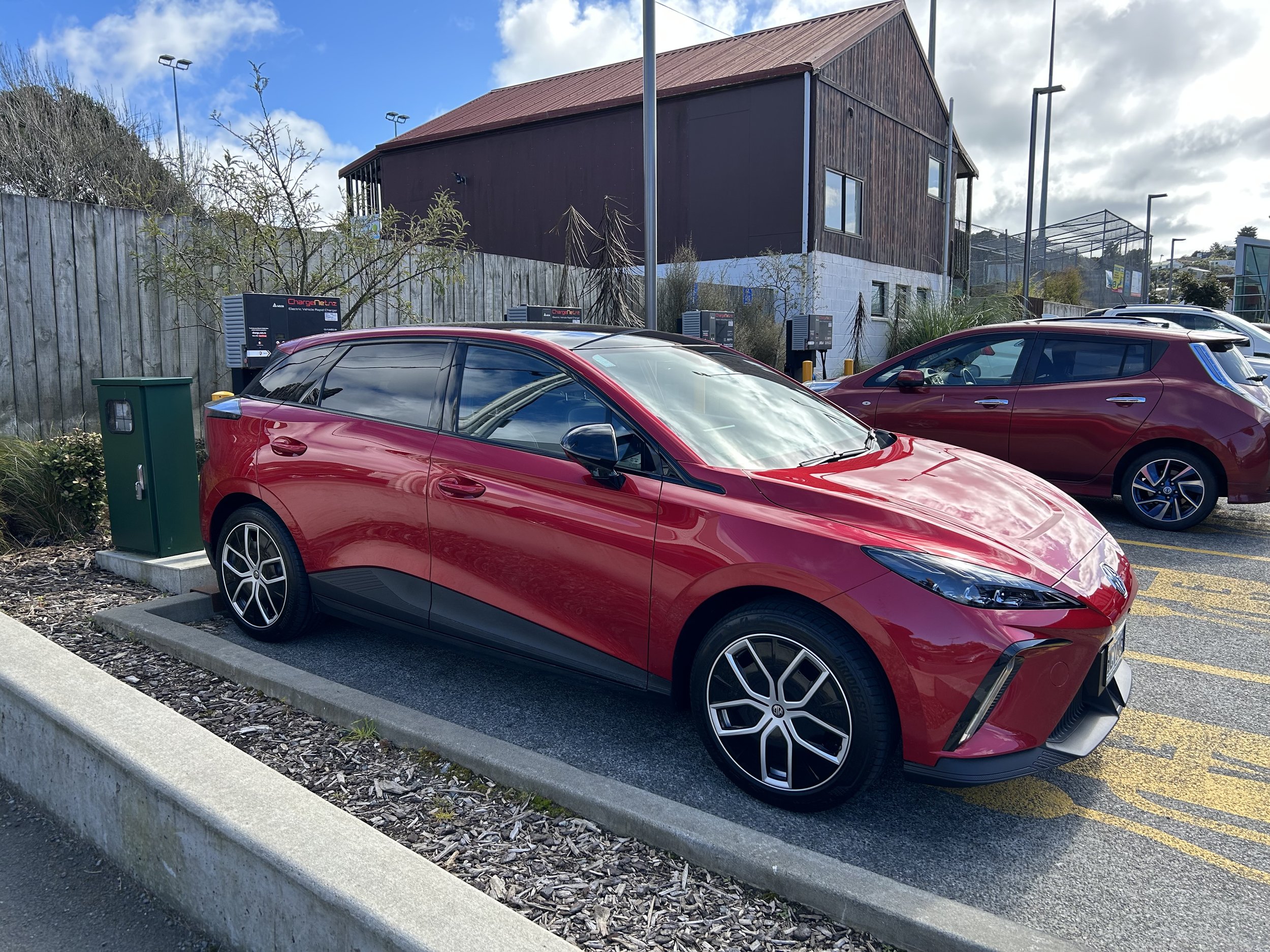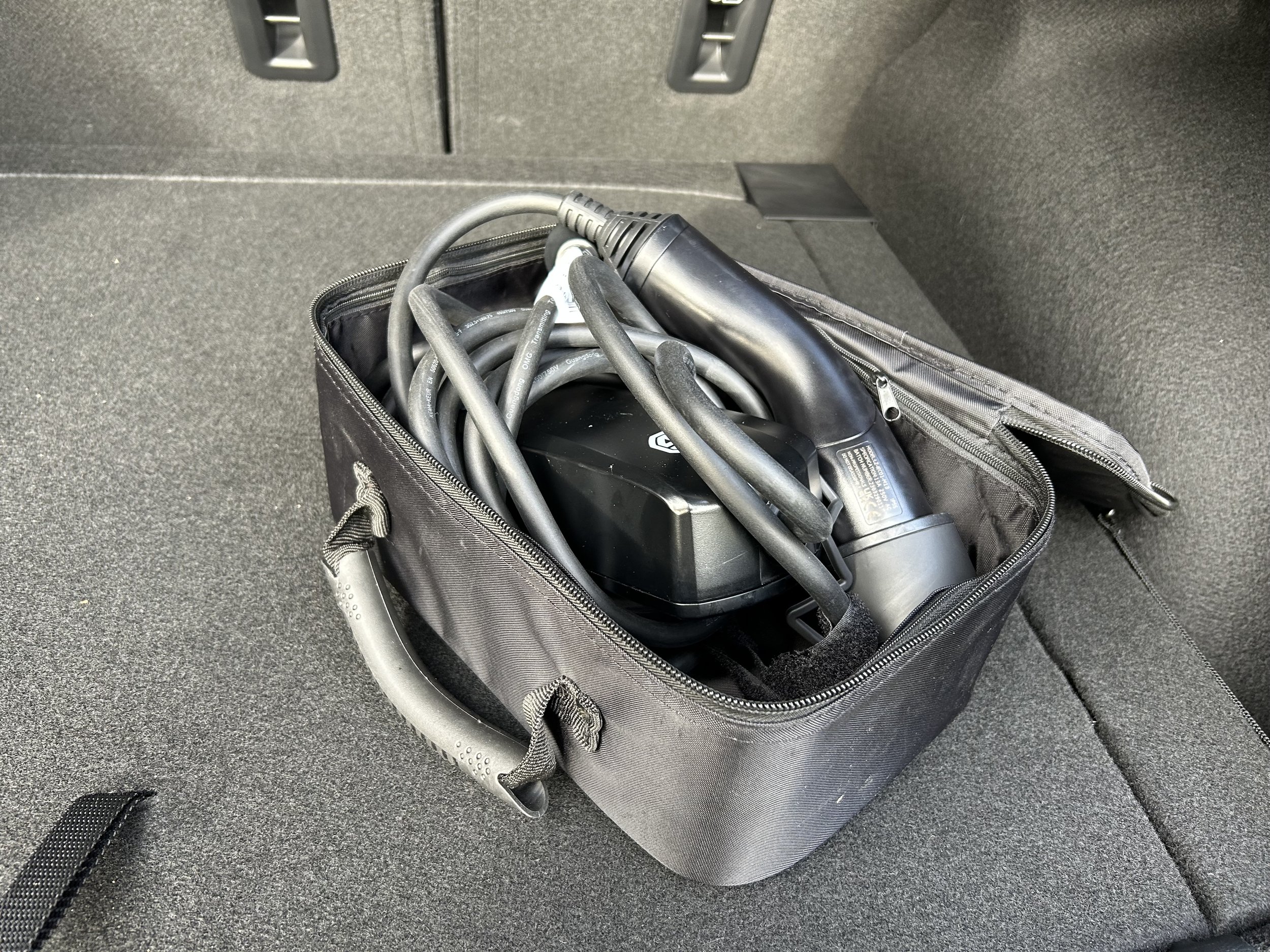MG4 Essence 64 roadtest review: Wired for success
/Time with this well-priced mid-range model provides a positive energy flow.
Price: $54,990 (pre $7015 rebate).
Powertrain and economy: Single electric motor, 150kW/250Nm; 13.8kWh; single speed; rear-wheel drive.
Vital statistics: 4287mm long, 1504mm high, 1836mm wide, 2705mm wheelbase. Luggage space litres. 18-inch wheels.
We like: Reborn MG’s best car; spacious cabin; engaging to drive; good looks.
Not so much: Inconsistent multimedia reactions; ride not quite right; lane assist calibration.
EVERY November they come out, in their hundreds - classic old racing cars, brought to Manfeild Circuit Chris Amon for a cobweb-clearing blowout.
This year’s will be special; the 100th year since the marque celebrated by the meeting’s organising group was born.
The MG Car Club of Wellington’s effort is a massive three-day celebration of Morris Garages in its first life: An eminently English brand making eminently English cars.
How long before the spotlight falls where it should; onto MG as it now is, a reborn Sino-centric effort?
Even if ultimately it’s final days were all about half-hearted to cynical badge engineering, MG Mark One certainly had its good days: Some of its cars were world-class.
Yet, ultimately, receivership in 2005 was basically a mercy killing. One that allowed, a year on, a new life under Chinese ownership that, in the here and now, looks increasingly promising. Arrival here of the MG4 could well stand as as landmark moment.
A compact electric hatchback is utterly removed from previous life proposition about success being reliant on small, two-seater, rorty petrol sports car packaging. Yet it’s emphatically the right car for this moment.
Given the quality of this product, how take-up of electric cars is going, and notwithstanding the ability of China Inc to spin up headline-making electrics, it could be that the owner count of MG4 might within a year or so constitute a bigger fan base than the club has ever enjoyed.
Some might say this firm’s first electric on a dedicated platform stands as the best electric proposition in the current market condition. Not me. Personally, it’s too big a call to base judgement purely on experience of just the one model on test.
Even so, it is clear from appraising it alone, in specification, performance and range-wise the 64kWh Essence is in a sweet spot.
Basically at the midway point of a range that represents in three battery options - the others being a 51kWh and a 77kWh - and, at $54,990, siting slightly toward the cheaper end of a price spread starting at $46,990 and topping at $63,990, it stands very good chance of being considered the best in its price band that has come from China, having been built by a Chinese maker.
That comment comes in recognition that it runs a battery whose chemistry and design will seem less alluring optimal to that in a certain other competitor. That the car might also be considered slightly challenged in respect to its physical size. And that some will think the central touch screen, so crucial to so much of its operability, could be quicker-witted.
Overall, though, it is is a car that demands attention. Cachet of being the China-originated car most Euro-like design in its design approach and driving feel, yet still asking considerably less money than the actual European models that match it most on size, performance and equipment level. Opel Mokka-E and Cupra Born being the two that spring mainly to mind.
China has, of course, spent years, and billions, positioning itself as a global leader in electric car manufacture, as well as battery construction and the processing of the chemicals and metals needed for batteries.
Even so, it’s the question about how cars of this quality and provision can achieve such price advantage is raising quite a bit of international thought.
For some time now there have been rumblings within the European car industry that Chinese car makers are essentially 'dumping' new cars, especially electric cars, on their turf at below their cost price in an effort to undermine the major local manufacturers. Now there’s an official investigation by the European Commission.
No such thought has been raised in this market but, as things stands, the MG4 is among a few EVs that genuinely seem cheaper than they might be expected to. The least costlier - with the 51kWh battery - becomes a $39,975 buy in if you secure Clean Car discount. Even the dearest is not that expensive.
Where would you settle? Notwithstanding the data that most Kiwi daily driving puts only around 60 kilometres on any car’s odometer, my personal preference would be to steer clear of the smallest battery car because its 305km cited range just doesn’t sound quite enough. On the other hand, is the top dollar Long Range, over-egging with 77kWh and 500km? Possibly, for many.
The 435 kilometres’ range MG cites from the 64kWh battery here does seem about right on paper, yet on test experience suggests there’s no more or less credibility from that WLTP-sorted economy than any other the test has thrown up.
I drove the car on a 320km round trip, almost all at open road speed. Having begun the day with 89 percent charge and 411kms’ range asserted, I should have been able to do the whole trip without having to give thought to hooking into a charger. Usual story, though; energy consumption even when strictly adhering to speed limits and applying prudent driving techniques, the cited optimal every use was never discovered; often consumption was quit a lot higher. About 70 percent through the trip, the range estimate was such that I hooked to a 50kWh charger en route. Not far from home, so just for 20 minutes, but still …
Because? The weight of an additional occupant and some luggage taken on at the 190km mark obviously altered calculations. So too the return leg being in a steadily increasing headwind and more traffic. Such is life with an electric car.
The MG4’s credential as an amenable companion was also nonetheless box-ticked on that same outing. What adds to the appeal is that it delivers very good driving aptitude to abet what I think is a pretty decent styling.
When all its home-drawn rivals tend to favour crossover blobbiness, it’s refreshing to see MG4 break away from that mould, with a look that’s notably more hatchback-like and all about neat lines and sharp creases.
Any controversy? The smooth, pointed, sports car-like front end and clean profile were appreciated, but the tail seems to split option. The back end seems quite fat but the bigger discussion point is the rear wing being two elements with a gap between each.
MG kicked back into life as a budget brand, so while the cabin in layout, look and quality and colour of the plastics is more mature and less Mattel than certain others favour, some of those ingredients are a bit hard and brittle.
Still, the cabin is identical throughout the price span, so what might seem a bit cheap in the priciest type will look smarter than expected at the cheap end, and that’ll be good enough for some. Would you believe MG used the VW ID.3 as a benchmark? Well, yes … yes you would. But, hey, until the ID.3 arrives (or you happen to compare with an ID.4/ID.5), then who will be the wiser?
As in the car from Wolfsburg, it has two screens, a small one ahead of the driver that prioritises the speedo and a big one - which doesn’t rotate (thankfully) - in the centre between the front seats.
The larger is a multimedia touchscreen, just as the ZS has, but promising on strength of its much smarter design, look and feel to be a whole generation ahead, if not more.
Unfortunately, it’s not quite there. The screen requires quite a firm prod, and some of the buttons and text are on the small side and there are layers of menus, which can get a bit confusing.
Starting the MG4 doesn’t seem an obvious illustration of where the screen is less smart than it could be. Bear with me.
Ostensibly, the regime is similar to the Tesla Model 3 and VW Group’s MEB platform cars With the key on your person, you just hop and sit down. Belt up, press the brake pedal and select either Drive or Reverse using the rotary controller. Cool.
When egressing, you can simply alight. Just remember to lock the car, else some systems - mainly the audio - will keep running. Alternate, you can manually switch the car off. That’s trickier as there’s no orthodox button. Rather, it’s via a sub-menu. When I picked up the car, a guy at the dealership helpfully showed me where this was, just a couple of screen swishes. Easy? It honestly looked it. But do you think I could find that exact prompt again? Not on your nelly.
More to discuss. There are physical home and volume buttons, as well as a row of virtual shortcut buttons, but frustratingly those disappear when you switch to phone mirroring, as does the climate control panel, whose fiddly nature does seem to require far too much time with your eyes off the road to operate safely.
If you start mucking around too quickly with different controls it can become flustered, to point of just giving up.
It does support Apple Car Play and the Android option, each requiring a wired connection and a neat touch is that lifting the surface of the recharging pad reveals 'tunnels' leading under the shelf to the lower section of the centre console. These are designed to accommodate charging linking to the USB-A and USB-C ports.
Storage is very good. Along with the expected cupholders and a usefully deep hidden cubby under the central armrest, there's a shallow but wide storage area between the front seats.
The steering wheel itself harkens back to a particular period go MG/Ausin/Rover history in being a relatively large squared-off circle. It feels okay to hold, but seems an unnecessary weirdness.
How niftily the car takes off depends on which driving mode has been selected. It defaults to Normal, while the other settings are Snow, Eco and Sport. There's also a Custom option in which the driver can choose their own preferences for steering weight, level of brake energy regeneration and throttle response.
It’s possible to choose from three different brake energy regeneration settings. The orthodox way, to do this via a menu on the touchscreen, which you’ll quickly come to find as being a faff.
You’ll instead designate this function as it was on the tester; to one of the two buttons on the steering wheel button specifically designed to configure as short-cuts. A trick from the BMW book, maybe, but a good one nonetheless. On the test car, the drive modes were on one, regen settings on the other. They could have also be tailored for fan settings and temp or the 360 camera.
Using maximum regeneration when in stop-start traffic around town, minimum on the open road seemed the way to go. There’s also an auto setting that’s generally prescient, but not always. The region is never quite one-pedal driving, regardless of the setting chosen, but is useful nonetheless.
The platform design is a breakthrough. Until now, MG's other battery-involved models have used chassis’ designed to accommodate combustion engines, too; hence why the ZS is front motor, front drive.
MG4, of course, is natively rear motor, rear-wheel drive, which becomes a winning formula for several reasons.
For MG itself, it’s a way of creating a highly flexible platform; larger cars, likely starting with the ext ZS, on on this underpinning for good reason that it is designed to support wheelbases ranging from 2650-3100mm and batteries from 40-150kWh. As well as an additional front motor for the high-performance four-wheel-drive MG4.
Also enabling the lowish shape is the battery placement and design. As is common now, the unit forms an integral part of the car’s structure. However, in being just 110mm thick, it’s slimmer than many. That allows the car to not just get away with looking hatchback-ish. While the lowest seating position is still a little higher than you'll find in internal combustion engined cars, it nonetheless feels like a low car by EV standards.
The drivetrain layout also delivers a level of packaging freedom that’ll surely be certain to make ZS owners cry; for a car that’s surprisingly short, it also eyebrow-raisingly roomy inside. To a point.
Three adults could conceivably fit in the rear, though it'd be more comfortable for just two, but front and rear provision plenty of legroom and headroom and, of course, the floor is almost completely flat. The centre has a raised section, but it’s not pronounced, and wide enough for the middle passenger to put their feet on.
The rear seat back splits 60:40 and folds down, and though it creates a step with the boot floor rather than a fully-flat surface, the space is decently large. MG quotes a figure of 363 litres for the boot volume with the rear seats in place, which is good.
The feeling of it being spacious for its overall size is very felt from the driver’s seat, where MG affords a much better quality of seat and driving position than the ZS affords.
The driving itself is pleasant. The MG4 in this form is quick enough to be perfectly useful in everyday scenarios, but isn’t outright sporty. It doesn’t need to be. of course. That’s the specific remit of the performance-themed, dual motor X arriving next year.
The impending flagship could be quite a hot shot - though, ironically, it’s the one MG that could not be taken on track to prove its spurs, were it lined up for the Manfeild meeting.
That’s because motorsport’s ruling body presently only allows EVs into which stop short of being fully door-to-door combats. One car sprints and the like are okay. Actual full grid races not. Even if the latter gets a green light, circuits and race organisers ultimately decide.
The more impressive elements are that it's quiet - the lack of road noise and wind roar will be appreciated when covering long distances, but also appreciated is that occupants are better insulated from motor noise than in ZS - and that it sits well on the road.
Back when I was a teen, the trend toward front-drive in everyday cars was just taking off and there was huge debate about how ruinous putting power through driving wheels would be to feel. We’ve all got used to it now, but with EVs going back to the old way, you are reminded of why the original format was better, in respect to sweetness of steering feel.
What could be done better is the suspension tuning. It avoids the extremes of sloppiness and overt firmness, yet still doesn’t quite hit the mark. Electric cars are not easily sorted for ride comfort because of all the weight they deport, but MG engineers might do well to spend time in something like the Skoda Enyaq.
Overall, though, there’s far more to like than to pick at. There’s also sense that anything that draws criticism for being irksome can be remedied. Also, it surprises in some unexpected way: A 500kg towing rating is light, but better than none at all (as per a competitor, Nissan Leaf).
China has become a major sourcing point for attainable electrics. This is by far and away the best of the home-grown choices I’ve experienced.
New Zealand Car of the Year as awarded by the NZ Motoring Writers’ Guild is our only true national award; as a judge, I’d be highly highly surprised if it doesn’t become a finalist, if not a favourite.






















